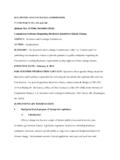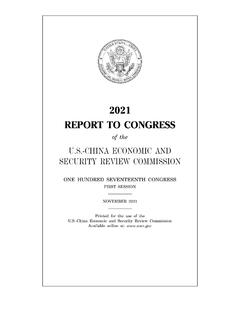Transcription of Guidance for commissioning AAC equipment
1 Guidance for commissioning AAC services and equipment OFFICIAL 2 NHS England INFORMATION READER BOXD irectorateMedicalCommissioning OperationsPatients and InformationNursingTrans. & Corp. StrategyFinancePublications Gateway Reference:04885 Document PurposeDocument NameAuthorPublication DateTarget AudienceAdditional Circulation ListDescriptionCross ReferenceAction RequiredTiming / Deadlines(if applicable) Guidance for commissioning AAC services and equipmentSuperseded Docs(if applicable)Contact Details for further informationDocument is a controlled document. Whilst this document may be printed, the electronic version posted on the intranet is the controlled copy. Any printed copies of this document are not controlled.
2 As a controlled document, this document should not be saved onto local or network drives but should always be accessed from the intranet. Guidance00 Carolyn YoungNHS England/Specialised commissioning /Programme of Care Lead Trauma (Midlands & East) 00 This guide is intended to help all those coming into contact with AAC services to understand the organisation of the service and its delivery, and offer signposts for how to access the support it England/Specialised Commissioning04 March 2016 CCG Clinical leaders , CCG Accountable Officers, Local Authority CEs, Directors of Adult SSs, NHS England Regional Directors, NHS England Directors of commissioning Operations, Directors of Children's Services, Royal College Speech and Language Therapists, Communication Matters, Motor Neurone Disease Association#VALUE!
3 Service Specification: Complex Disability equipment Communication Aids (Specialised AAC services) - Gateway reference 047900N/A OFFICIAL 3 Guidance for commissioning AAC services and equipment Version number: 1 First published: 4 March 2016 Prepared by: Specialised commissioning Classification: OFFICIAL Promoting equality and addressing health inequalities are at the heart of NHS England s values. Throughout the development of the policies and processes cited in this document, we have: given due regard to the need to eliminate discrimination, harassment and victimisation, to advance equality of opportunity, and to foster good relations between people who share a relevant protected characteristic (as cited under the Equality Act 2010) and those who do not share it; and given regard to the need to reduce inequalities between patients in access to, and outcomes from healthcare services and to ensure services are provided in an integrated way where this might reduce health inequalities.
4 OFFICIAL 4 Contents Contents .. 4 1 Introduction .. 5 2 What is AAC? .. 5 3 Who uses AAC? .. 5 4 commissioning AAC services .. 6 Background .. 6 Today .. 6 5 The remit of a local AAC service .. 7 6 The need for a local AAC budget .. 8 7 SEND Code of Practice and AAC .. 8 8 The remit of specialised AAC services .. 8 9 The criteria for referral to a specialised AAC service .. 9 10 Useful links .. 9 11 Appendix 1: Decision tree to support referral to specialised AAC services .. 11 12 Appendix 2: Specialised AAC services .. 12 13 Appendix 3: Definition of communication aids .. 14 14 Appendix 4: Local AAC service case studies .. 15 OFFICIAL 5 1 Introduction 1. Augmentative and Alternative Communication (AAC) services help people communicate as effectively as possible when speech is impaired.
5 This guide describes how the commissioning of these services is organised between local AAC services and specialised AAC services, with the aim of improving access to these services for all patients children and adults. 2. It explains how most children and adults needing and using AAC will receive locally commissioned services. Those with the most complex communication needs are able to access specialised AAC services funded directly by NHS England and organised regionally. 3. A decision tree to support referral to specialised AAC services can be found in Appendix 1. Useful links to other resources are given at the end of this guide. 2 What is AAC? 4. The term Augmentative and Alternative Communication (AAC) covers a wide range of techniques that support or replace spoken communication.
6 AAC techniques use a person s abilities, whatever they are, to compensate for their difficulties with speech and to make communication as quick, simple and effective as possible when speech is impaired. The techniques include gestures, signing, symbols, communication boards and books, as well as powered and computerised devices such as voice output communication aids (VOCAs). 5. Enabling people to communicate improves their quality of life. It offers people new opportunities in their family life, education, social life, friendships and employment. It helps to increase independence and promotes equality for people with difficulty communicating. 3 Who uses AAC? 6. AAC services are not accessed by a single patient group, but by a wide community of children and adults who may find communication difficult for a number of reasons.
7 Those using AAC services may include people with a congenital disability (such as cerebral palsy, learning disability or autism), a progressive condition (such as Motor Neurone Disease) or a sudden acquired disability (through stroke or brain damage following an injury). Family members, carers and staff may also need to understand AAC equipment and services. OFFICIAL 6 4 commissioning AAC services Background 7. Before April 2013, AAC services were commissioned by a mix of commissioners , including health, social care, education, voluntary sector, and private individuals. Varying approaches led to a lack of consistency in the definition of services and inequitable access across England.
8 8. In April 2013, NHS England became responsible for commissioning services for those with the most complex communication needs. This has seen developments in the way specialist services are commissioned and funded, with a national service specification for AAC and the identification of 15 specialised centres. Today 9. Services for children and adults who need and use AAC are now commissioned as specialised and local AAC services. This has been described as the AAC hub and spoke model, with a number of regional hubs able to provide specialised services and support to a number of associated centres, or spokes , offering local AAC services. 10. Specialised AAC Services are now funded directly by NHS England.
9 They provide assessment, review and equipment for those with the most complex communication needs who are likely to require a high-tech powered communication aid. It is likely that around of the population, or 5 in 10,000 people, will use these services. 11. Most children and adults who need AAC will be supported by local AAC services. These are commissioned by Clinical commissioning Groups (CCGs), education and social care commissioners . Those accessing local AAC services are likely to be a group around 10 times larger than those using specialised AAC services, at approximately of the population or 50 in 10,000 people. That is, around 90% of the AAC population require local AAC services and 10% of the AAC population require specialised AAC services.
10 12. Local AAC services are also required to provide on-going support for individuals who have been referred to specialised AAC services during the assessment process and following the provision of equipment , as referrals accepted by NHS England specialised AAC services are not onward referrals 13. The steps that have been taken with specialised centres across the country working to the same service specification and better connections to local services are helping ensure more equitable access for all patients and reducing variability in the service provided. OFFICIAL 7 14. Appendix 2 lists specialised AAC services by each NHS specialised commissioning region. Appendix 3 gives definitions for different types of communication aids, and indicates which are typically provided by local commissioning arrangements and those which are typically specialised AAC services.
















